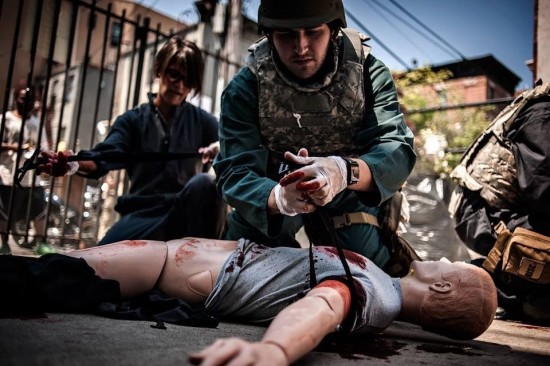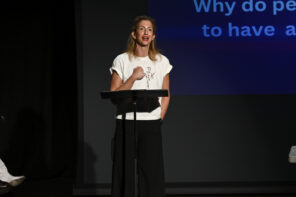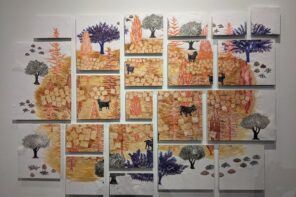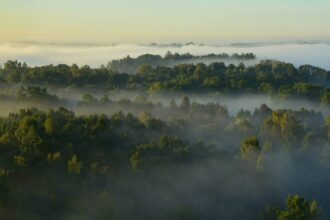Supporting Journalists in the Field: RISC
A year in review
This post is DIRECTLY from Sebastian Junger’s site: RISC
photo credit Coffee + Celluloid
I am re-posting this Year-in-Review by a respected colleague, journalist, Award Winning Author, and Academy Winning Documentary Filmmaker, Sebastian Junger. I am doing so because as a journalist, the support available is limited in terms of those who risk their lives to be on the front lines in order to deliver a story to the masses. I want to take a moment to thank Sebastian for doing an interview in the Magazine earlier this year AND for spending an entire hour with me on my Radio Show. RISC is not only essential to the field of journalism.
It’s reach is infinite.
– Dawn Garcia, Editor-in-Chief
Hi Everyone –
I’m happy to report an incredibly successful year for RISC. It has been our first full year of operation, and we were able to provide three training sessions – including one in London – for 72 additional graduates. No one knows the exact number of freelance war reporters out there, but I feel that we are gradually working our way through this small but incredibly important population.
The London session was the first that I was able to attend personally. Not only was it a very powerful experience for me, but I was able to evaluate, first hand, the course that I conceived of almost three years ago, after Tim got killed. WMA and I are working closely together to make small but important changes in the course that I think will make the experience even more realistic and valuable to our trainees.
Fundraising is also going well, though it is a constant effort that we can’t really let up on. Meanwhile, we are getting a steady stream of stories and thanks from our graduates, who have taken their RISC training – and medical kits – back overseas. We have not saved a life yet, and hopefully we will never have to. But it is incredibly gratifying to know that we are training the very front rank of the overseas press corps.
Thank you all for your support, I hope you will consider making a yearly donation to our efforts. We are doing something that has never been done before, and it’s going to take the hard work and the generosity of an awful lot of people to make it work long term. Happy holidays to all of you –
 Sebastian Junger
Sebastian Junger
Founder and Director, RISC
2013 Financials
What are the costs of a RISC training?
- Instructors’ Fees – $14,414
- Trainee Accommodations – $4,331
- Medical Kit Supplies* – $2,124
- Venue Rental – $2,000
- Welcome Reception – $327
- Coffee and Snacks – $100
24 Journalists, 4 Training Days, 8 Hours Per Day
Total Cost: $23,296
Cost Per Trainee: $971
This chart reflects the average costs of a training in New York City. The cost of courses outside the US include travel for instructors and RISC staff, as well as shipping fees, and are up to 50% higher.
* RISC medical kits have been graciously donated since October 2012 by Combat Medical Systems. We supplement their donations with a few extra supplies.
Who funded RISC in 2013?
- Grants – $110,000
- Individual Contributions – $67,123
- Events – $14,179
- News Agencies – $10,000
Total Revenue: $201,302
Where do your donations go?
- Training Costs – $81,526
- Personnel – $73,570
- Events & Fundraising – $19,171
- Administrative – $14,875
Total Expenses: $189,146
Trainee Demographics
Ages of RISC participants
- 22-29 years – 51
- 30-39 years – 39
- 17-21 years – 20
- 40-49 years – 8
- 50-58 years – 2
Total Number of Trainees: 120
Average Age: 30
Median: 28
Mode: 25
Where do RISC trainees come from?
| Country | Participants |
|---|---|
| United States | 74 |
| UK | 9 |
| Canada, Italy | 5 |
| France, Germany, Netherlands, Spain | 3 |
| Australia, Norway | 2 |
| Belgium, Finland, Hungary, India, Israel, Kosovo, Mexico, Portugal, South Africa, Switzerland, Ukraine | 1 |
Type of Journalism
- Photography – 59
- Multimedia – 27
- Print – 21
- Video – 13
Total Number of Trainees: 120

Reflections of a Trainee
I feel enduringly grateful for the opportunity to attend the RISC training course. As a freelance photographer who often works in environments where armed conflict is underway, I believe that access to such training is essential. Without formal company backing and the staggering expense of most hostile environment courses, gaining access to training outside of RISC can be virtually impossible. Having attended RISC, I now feel confident to take basic but potentially life saving action if, God forbid, something were to happen to one of my colleagues. I hope that more of us can be trained as the nature of lifesaving assistance in combat is best performed by others who are uninjured. While I now feel confident in my ability to aid my colleagues, I hope that others will be capable of aiding me if circumstances require.
Pete Muller, Freelance Photographer, RISC Alum (October 2012)
Photo credit © Daniel McCabe

Interview with RISC alum Fabio Bucciarelli
By Katya Bookchin, RISC Intern
Italy, July 2013
What inspired your interest in photojournalism?
I have a degree in engineering telecommunications, and before I was a photographer I worked as an engineer in Barcelona in 2008. I knew I was interested in photography, so I eventually decided to leave my job and go to Iran to take photos for a report. When I came back to Italy I covered the earthquake in Abruzzo, collaborating with LaPresse as a stringer. Later, I was on staff in Turin where I photographed breaking news (Milan Fashion Week, sports, the G8 summit, politics). After a year and a half, I left to work as an independent photojournalist with the goal of documenting things like conflicts and human rights. I worked freelance until 2010 at publications like Il Fatto Quotidiano. In 2011, covering the conflict in Libya, from before the NATO intervention until the death of Gaddafi, I worked freelance for the Times of London and other international publications.
I didn’t see in engineering a passion that I wanted to dedicate my life to so I decided to put myself out there and try photography for a few years.
What draws you to the events you choose to cover?
For the last 2 years, I’ve occupied myself mostly with conflict reporting: Libya, Syria, Mali, Sudan. The motivation behind my work is to document: to try to show the world what’s happening in those places. I focus my work on the effects of the conflict, other than the “bang-bang,” I try to capture the wounded, the dead, and the survivors. I want to document people who escaped (like the exodus to Lampedusa after the Arab Spring), migratory populations, asylum seekers. My interest is strictly to document.
How did you react the first time you entered a life-threatening situation? How have you acclimated yourself to this idea over time?
When I’m covering a conflict, there’s always the risk, more or less depending on where I am. But as a reporter, you’re always in a zone where there could potentially be bombs, mortars. In the end, you get used to anything. It’s not like you are ever happy to be living there, but when you’re there for a long time, you get used to it. Think about the people who live their daily lives there. The civilians get used to war: that’s an insane thing. In a lesser sense, journalists get used to this too. After all, the fear and the risk are always there.
When you’re reporting on an event, do you ever feel a conflict between the need to report objectively and a desire to directly involve yourself in helping the people you’re reporting on?
My purpose as a journalist going into certain zones is to document, to help with images to show what’s happening. Obviously if there’s a way that you can help in the moment, you help, but the main point is to document what’s happening: this is how you help. Because you often aren’t able to help physically – you’re there to do your own work.
How do you deal with the culture shock of coming back home after spending time in conflict zones?
When I come home, I try to compensate. I come to Abruzzo where I can relax at home, in contact with nature. I try to compensate because you can’t compare the two realities of living here and there. The shock can be mitigated when I’m around people who know me and know what I do, who care about me. After coming from some place like Libya or Syria, I try to compensate by having a period of tranquility and peace.
Do you believe that the public has become desensitized to images of brutality typically associated with conflict zones, and if so, what do you think is the key to capturing a photo that will catch their eye?
If I can move the conscience of even one person, my goal has been reached. There are tons of fake images like video games of war that make it common to see these things, but images from professional photographers who go there still have more appeal, more truth. There’s no tactic to getting the photos, but I do believe that the difference between good and great photography is that great photography reflects an empathetic sentiment between the photographer and what’s happening around him or her.
Tell me about one of the most meaningful experiences you’ve had covering a conflict.
The most tragic situation is that of the populations – this is an undercurrent of all conflicts, especially Syria. It’s the every day life that’s so insane, the population that’s living under helicopter attacks, mortar attacks by a government that’s fighting against its own people. The incredible thing to me is war itself, daily life under the bombs. I took a photo in the city of an old city of a woman crossing a destroyed sheet. To her left there’s a black sheet – she’s with her shopping bags crossing a street with this sheet that keeps this citizen out of sight of the regime. And she represents daily life, this woman with her shopping bags crossing this street with the sheet, because she has to go buy food, because her life has to go on.
Why were you interested in RISC, and have you used your training in the field?
I believe it’s very important to know more, to know how to react in a case of emergency. We know as journalists that we’re always at risk. You can always be hit by a mortar, by shrapnel. To have the instruments and knowledge to help a colleague or yourself is fundamental. Everyone should do a course like this to learn more. Maybe people have knowledge, but the practicality of it is essential. The reaction time is essential. And at RISC we did simulations and practiced applying the techniques in a conflict setting. I haven’t had to use anything from RISC yet (I did the training 4 months ago) but I know I’ll use it – I’ll always carry my kit around.
Photo credit © Giulio Petrocco









